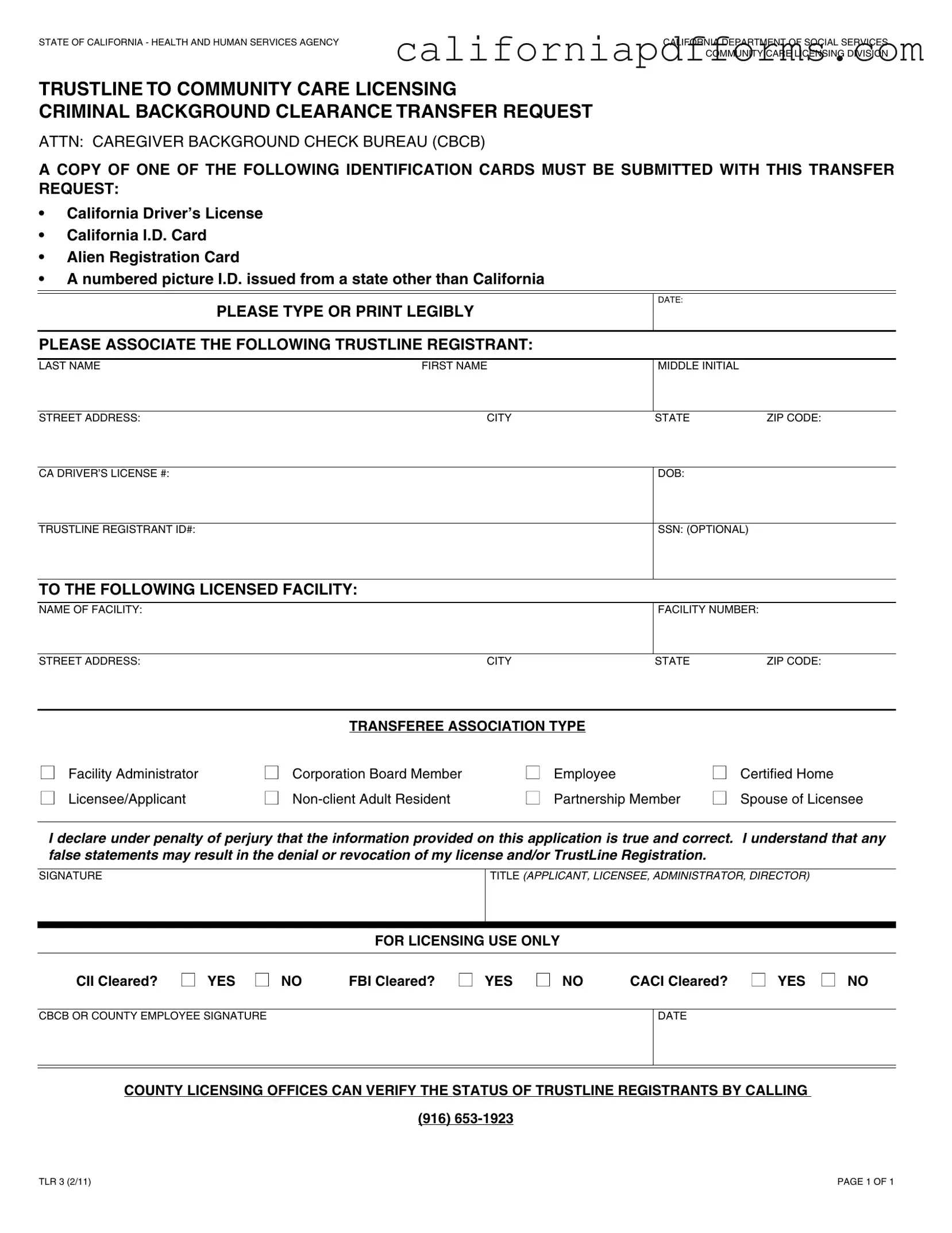Misconception 1: The TLR 3 form can be submitted without any identification.
Many believe that they can submit the TLR 3 form without providing identification. However, a copy of a valid identification card is required. Acceptable forms include a California Driver’s License, California I.D. Card, Alien Registration Card, or a numbered picture I.D. from another state.
Misconception 2: The TLR 3 form is only for employees of licensed facilities.
Some individuals think that only employees can use the TLR 3 form. In reality, the form is applicable to various types of associations with a licensed facility. This includes administrators, board members, non-client adult residents, and spouses of licensees.
Misconception 3: Submitting the TLR 3 form guarantees approval for background clearance.
There is a common belief that submitting the TLR 3 form will automatically result in a cleared background check. This is not true. The form is a request for a transfer of criminal background clearance, but approval depends on the results of the background checks conducted by the relevant authorities.
Misconception 4: The information on the TLR 3 form does not need to be accurate.
Some people think that they can provide inaccurate information on the TLR 3 form without consequences. This is a serious misconception. The form requires a declaration under penalty of perjury, meaning that false statements can lead to denial or revocation of licenses and registrations.
